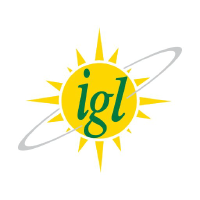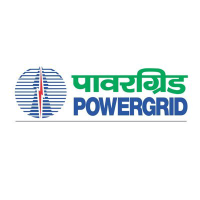Company Analysis Indraprastha Gas Limited
1. Summary
Advantages
- Price (198.88 ₹) is less than fair price (269.3 ₹)
- Current debt level 0.5708% is below 100% and has decreased over 5 years from 5.92%.
- The company's current efficiency (ROE=22.6%) is higher than the sector average (ROE=-374.34%)
Disadvantages
- Dividends (1.25%) are below the sector average (1.25%).
- The stock's return over the last year (-25.54%) is lower than the sector average (0%).
Similar companies
2. Share price and performance
2.1. Share price
2.3. Market efficiency
| Indraprastha Gas Limited | Utilities | Index | |
|---|---|---|---|
| 7 days | -7.3% | 0.1% | -1% |
| 90 days | 13.7% | 0% | 10% |
| 1 year | -25.5% | 0% | 6% |
IGL vs Sector: Indraprastha Gas Limited has significantly underperformed the "Utilities" sector by -25.54% over the past year.
IGL vs Market: Indraprastha Gas Limited has significantly underperformed the market by -31.5% over the past year.
Stable price: IGL is not significantly more volatile than the rest of the market on "National Stock Exchange Of India" over the last 3 months, with typical variations of +/- 5% per week.
Long period: IGL with weekly volatility of -0.4911% over the past year.
3. Summary of the report
4. Fundamental Analysis
4.1. Stock price and price forecast
Below fair price: The current price (198.88 ₹) is lower than the fair price (269.3 ₹).
Price significantly below the fair price: The current price (198.88 ₹) is 35.4% lower than the fair price.
4.2. P/E
P/E vs Sector: The company's P/E (14.55) is lower than that of the sector as a whole (43.6).
P/E vs Market: The company's P/E (14.55) is lower than that of the market as a whole (66.04).
4.2.1 P/E Similar companies
4.3. P/BV
P/BV vs Sector: The company's P/BV (2.99) is lower than that of the sector as a whole (4.26).
P/BV vs Market: The company's P/BV (2.99) is lower than that of the market as a whole (6.6).
4.3.1 P/BV Similar companies
4.4. P/S
P/S vs Sector: The company's P/S indicator (2.06) is lower than that of the sector as a whole (5.79).
P/S vs Market: The company's P/S indicator (2.06) is lower than that of the market as a whole (18.95).
4.4.1 P/S Similar companies
4.5. EV/Ebitda
EV/Ebitda vs Sector: The company's EV/Ebitda (9.7) is lower than that of the sector as a whole (17.45).
EV/Ebitda vs Market: The company's EV/Ebitda (9.7) is lower than that of the market as a whole (24.96).
5. Profitability
5.1. Profitability and revenue
5.2. Earnings per share - EPS
5.3. Past profitability Net Income
Yield Trend: Rising and has grown by 11.79% over the last 5 years.
Earnings Slowdown: The last year's return (0%) is below the 5-year average return (11.79%).
Profitability vs Sector: The return for the last year (0%) exceeds the return for the sector (-2.33%).
5.4. ROE
ROE vs Sector: The company's ROE (22.6%) is higher than that of the sector as a whole (-374.34%).
ROE vs Market: The company's ROE (22.6%) is higher than that of the market as a whole (3.54%).
5.5. ROA
ROA vs Sector: The company's ROA (14.79%) is higher than that of the sector as a whole (8.04%).
ROA vs Market: The company's ROA (14.79%) is higher than that of the market as a whole (7.89%).
5.6. ROIC
ROIC vs Sector: The company's ROIC (22.53%) is higher than that of the sector as a whole (10.78%).
ROIC vs Market: The company's ROIC (22.53%) is higher than that of the market as a whole (15.45%).
7. Dividends
7.1. Dividend yield vs Market
Low yield: The dividend yield of the company 1.25% is below the average for the sector '1.25%.
7.2. Stability and increase in payments
Dividend stability: The company's dividend yield 1.25% has been steadily paid over the past 7 years, DSI=0.86.
Weak dividend growth: The company's dividend yield 1.25% has been growing weakly or stagnant over the past 5 years. Growth over only 0 years.
7.3. Payout percentage
Dividend Coverage: Current payments from income (14.09%) are at an uncomfortable level.
Pay for your subscription
More functionality and data for company and portfolio analysis is available by subscription




